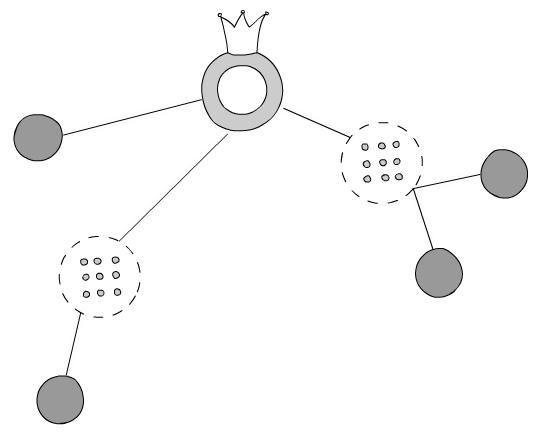Core Concepts
Conjunction is centered around a few core concepts:
Configurable search
As the name implies, configurable search revolves around the idea of making search queries configurable, rather than statically coded within your Sitecore solution. Looking at it from the perspective of the different actors involved there is the power user, the end-user and the underlying search index technology, which are all connected through Conjunction, as the powerful engine that facilites the communication between these three actors.

The power user configures the search queries to fit the business requirements. Once the search queries have been configured, these are readable from Conjunction. When an end-user tries to view the search results, a request is send to Conjunction to retrieve the results of the configured search queries, combined with the information provided as input to the search queries from the end-user. Having the configured search query decorated with the input from the end-user, Conjunction dispatches a request to the underlying search index technology, which then evaluate the decorated search query, and finally returns a set of matching search results that can be presented to the (happy) end-user.
The search query root, grouping and rule
When you are building a configurable search query, you are actually building a hierarchy consisting of small search query element parts - or simply, search query elements. A search query element can either be a search query root, a search query grouping or a search query rule.

The search query root is the top-level element of the search query element hierarchy, which defines the most general characteristics of the entire search query configuration. A search query grouping defines a group of one or more search query elements, and their logical relationship to each other. Lastly, the search query rule defines how a given field in the search index should be queried, like the title should contain the value 'x' or the created date should be between the 1st of January and 15th of September.
Everything is an item
Like everything else in Sitecore, every part of the search query configuration from within Sitecore is an item.
The idea behind this is to facilite the use of default functionalities found in Sitecore, like setting publishing restrictions on specific parts of a search query (like enabling specific parts of a configured search query on a certain date, or even disabling it) and creation of general search query element item structures that can easily be reused, or cloned and amended, for different purposes.
Extensibility as a first-class citizen
By default, Conjunction is delivered with a set of functionalities that allows you to use it directly with your Sitecore instance. However, when Conjunction was being sketched out, the main idea was to make it as extensible as possible, allowing you as a developer to swap out different parts of the API with your own implementations.
For instance, the way search query elements are retrived does not need to come from Sitecore. In fact, you could have another external system that delivers the search query configuration. Likewise, if you are not satisfied with the way end-users supply input to the search query, for example through the query string, you can simply write your own logic to handle receiving input from the end-user. Another example is the part of the API that retrieves the search results, where you can provide your own layer around the default implementation, decorating it to get, for example, caching of search results.
These are just some examples of how you can extend the default API that comes with Conjunction, what is important to understand is that there are a great number of extention points within the API, that allows you to tweak and utilize Conjunction to fit your needs - for more information, see the API Reference.